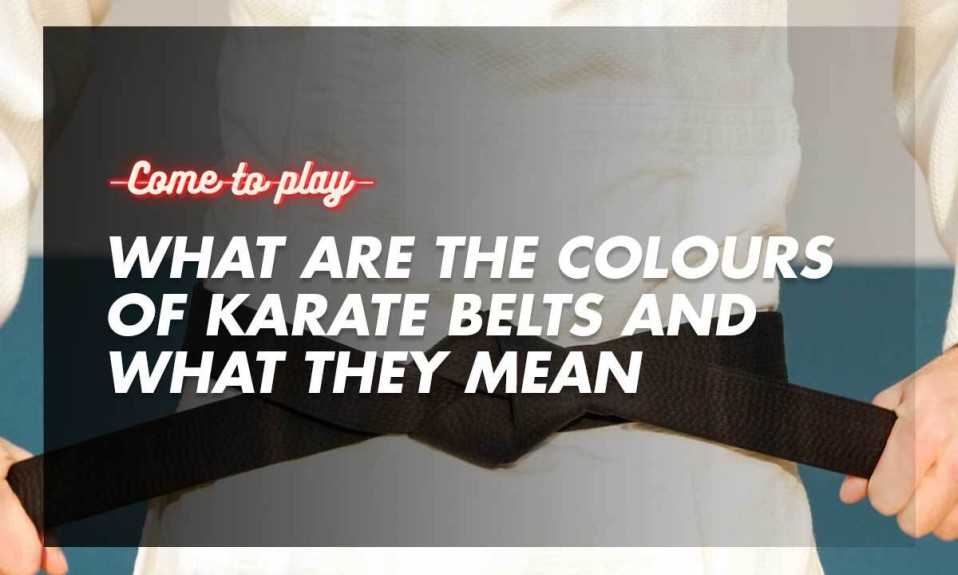Different martial art disciplines use different methods to denote rank.
Karate is one of the oldest sports and uses a coloured-based belt system to differentiate between the skill level of different Karate practitioners.
But what are the colours of karate belts, and what do they mean?
Let’s find out.
What Are the Colours of Karate Belts?
Belt colours now vary widely, depending on the school, style, and even country.
Here, we made a list of the most common belt colours, and in case you’re wondering, ‘What is the order of belts in karate?’, the belts are in ascending order, from the lowest to the highest rank.
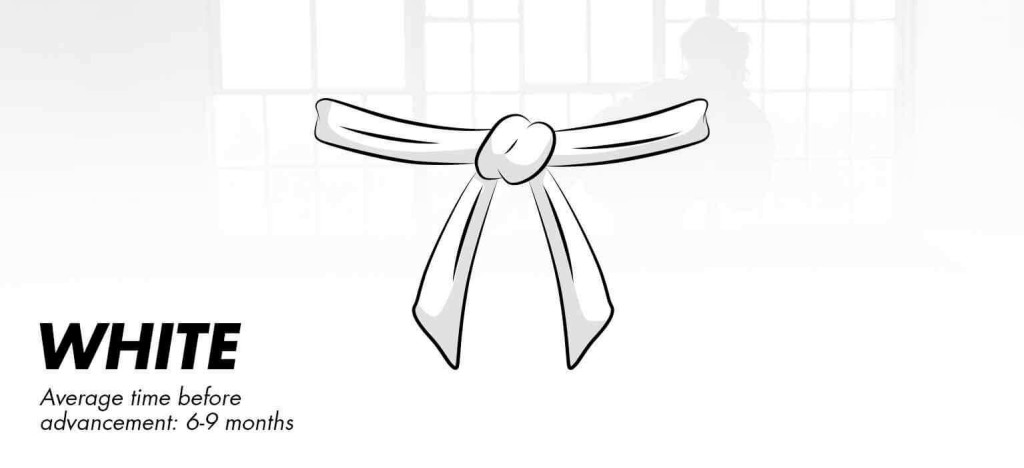
A white belt is a beginner’s belt.
This belt indicates that the practitioner is essentially a ‘blank canvas’ in karate. The white colour is considered a symbol of purity and eagerness to learn.
You might also be interested in: The best solo sports
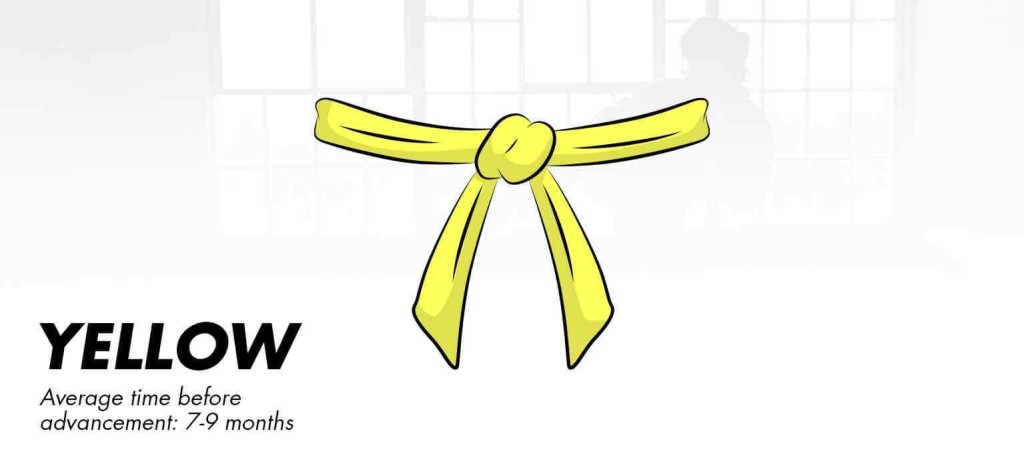
A yellow belt means that the practitioner understands the fundamentals of the practice. They start learning basic kicks, punches, and stance.
The colour represents the moment when the sun peeks over the horizon.
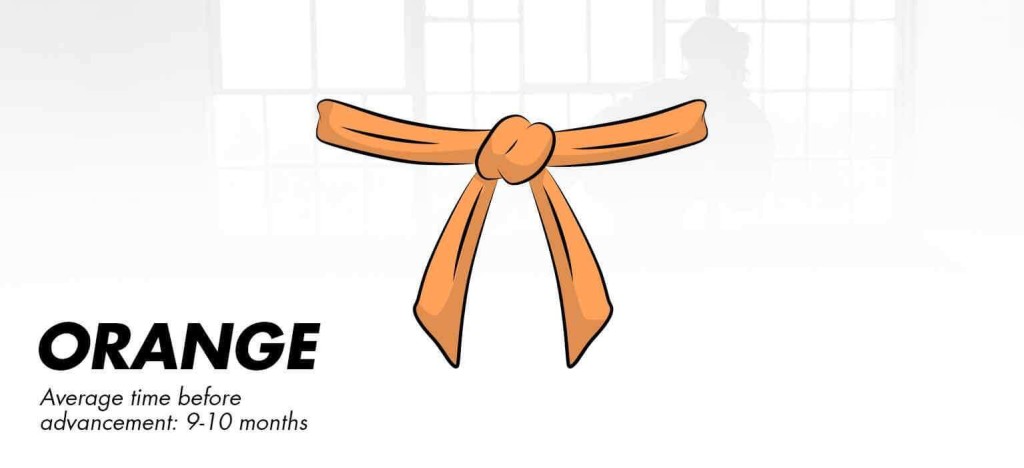
The sun turns orange as it starts to rise during the day.
That’s why the orange belt is given to students that are starting to get a better understanding of the basic techniques and can apply the principles of distance management.
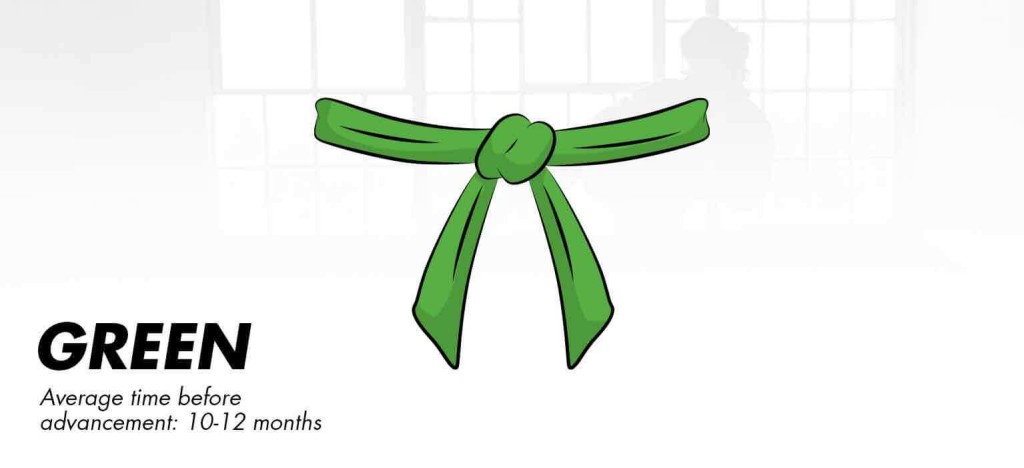
A green belt is awarded to intermediate students who refine their grappling/wrestling and striking skills. It is the first of all belt colours in karate that requires a more practical skill application.
Green is a nod to the colour of plans, which turn green when they start to grow under the sun’s light and heat.
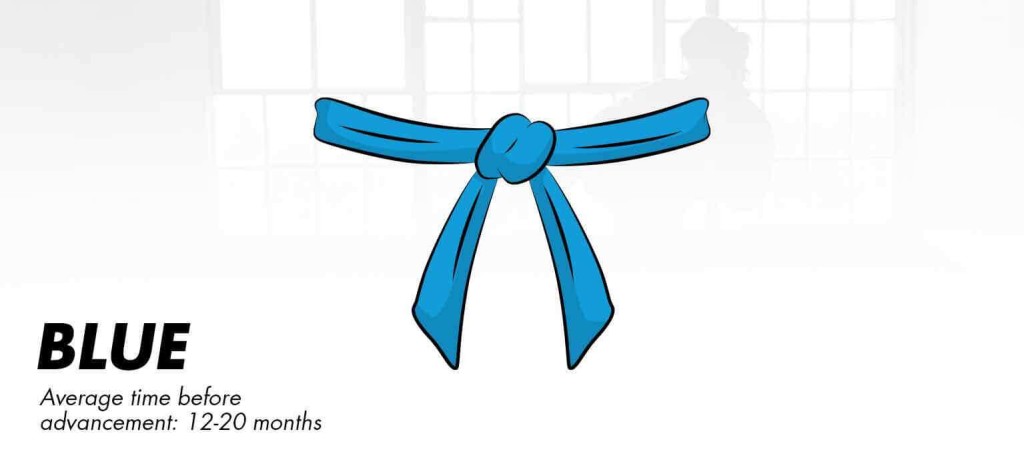
Students with blue belt are at a stage where they start to learn how to defend themselves. They also expand their knowledge and skills (Most students start sparring at this stage.)
Blue is the colour of the sky and signifies the clear view that students have of what they’re looking to achieve.
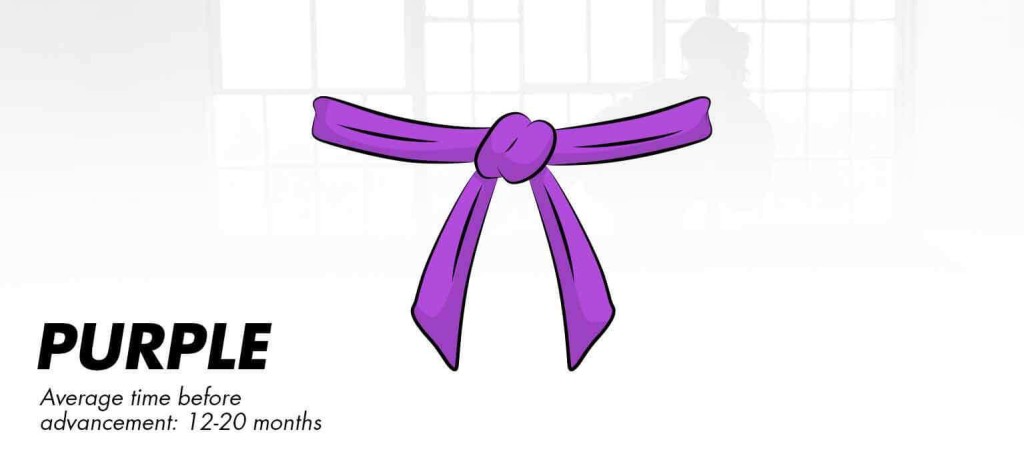
Purple is the colour of dawn and represents a transition from one place to another.
Students are awarded a purple belt and move to a more advanced place in their journey. They start to learn more about footwork to complement the techniques they have mastered, and their curriculum looks similar to that of advanced practitioners.
Did you know? Karate means empty hand in English
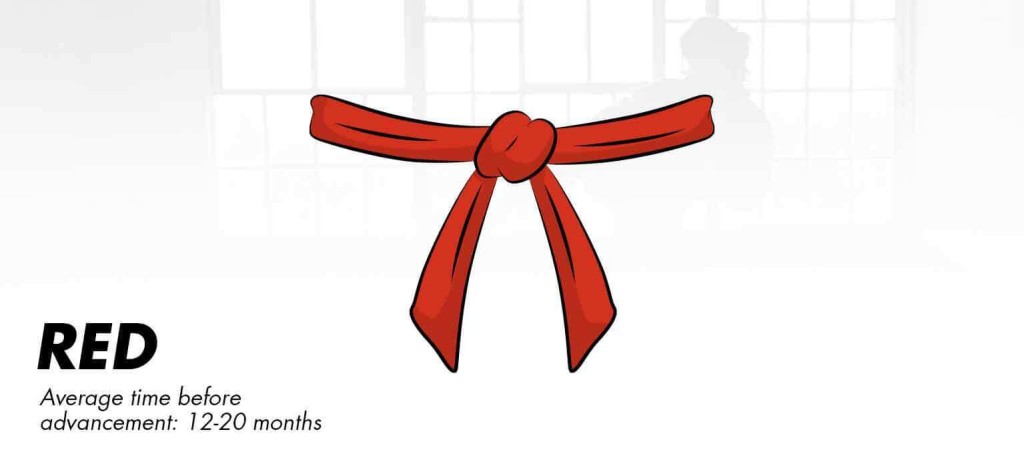
Red symbolises the strength and the danger of a hot Sun.
Students with this belt learn how to be cautious of the practice and start to help other younger or less-skilled karate practitioners informally. They’re also encouraged to help their community however they see fit.
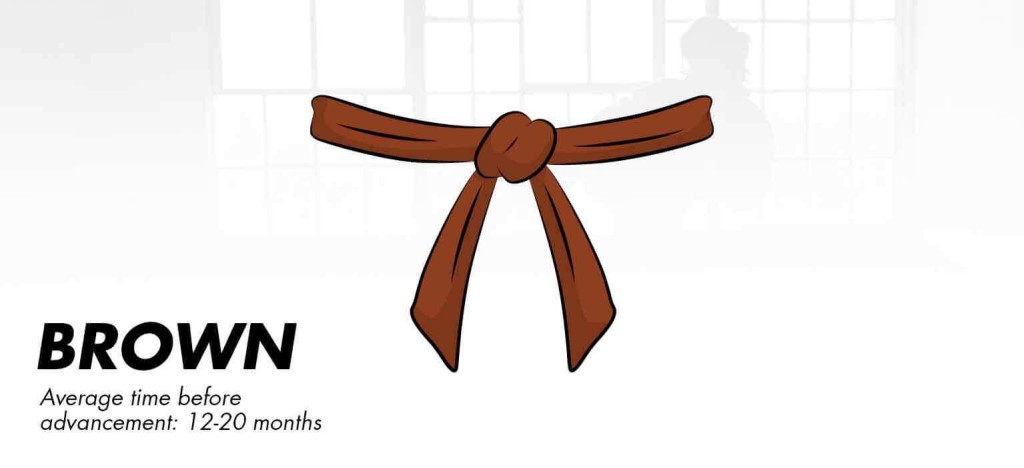
Brown represents the colour earth and the ripening of the seed during the harvesting process.
Brown-belt students start to taste the fruit of their labour. During this stage, they sharpen their techniques and begin to work on and perfect their weaknesses. This part requires mental solid fortitude.
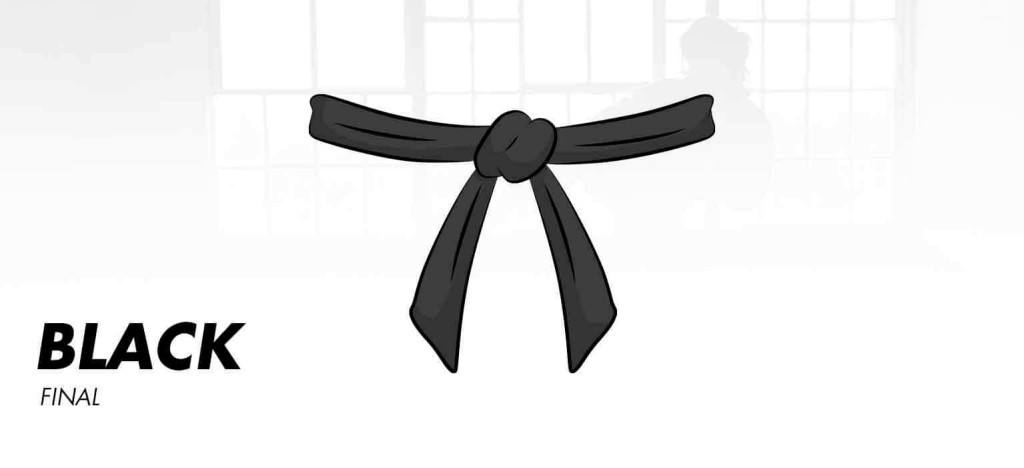
Black is the colour of the universe– the colour of power, discipline, and infinite knowledge.
At this stage, the student can showcase an ability to defend themselves, balance their techniques, and respect their opponent and surroundings.
Did you know? Zlatan Ibrahimovic has a black belt in taekwondo?
Bottom Line
Karate is one of the hardest sports and uses a colour-coded belt system to indicate ranks and where students are in their journey to mastery.
The colours vary based on style and place, but most system use at least five, including white, orange, blue, brown, and black.
You might also be interested in:
FAQ:
In what order do karate belts go?
The lowest rank in karate is the white belt. The highest is black.
How many belts are there in karate?
There are nine belts in karate. The number can vary based on the style and school where it’s taught.
How many years does it take to get a black belt?
Now that you know what are the colours of karate belts, you should also know that getting a black belt in karate usually takes around 2-5 years.
What belt was Bruce Lee?
Bruce Lee never earned a belt in any discipline. Instead, his martial arts background was in Wing Chun – which he studied under Ip Man—a discipline that does not have a belt system.

